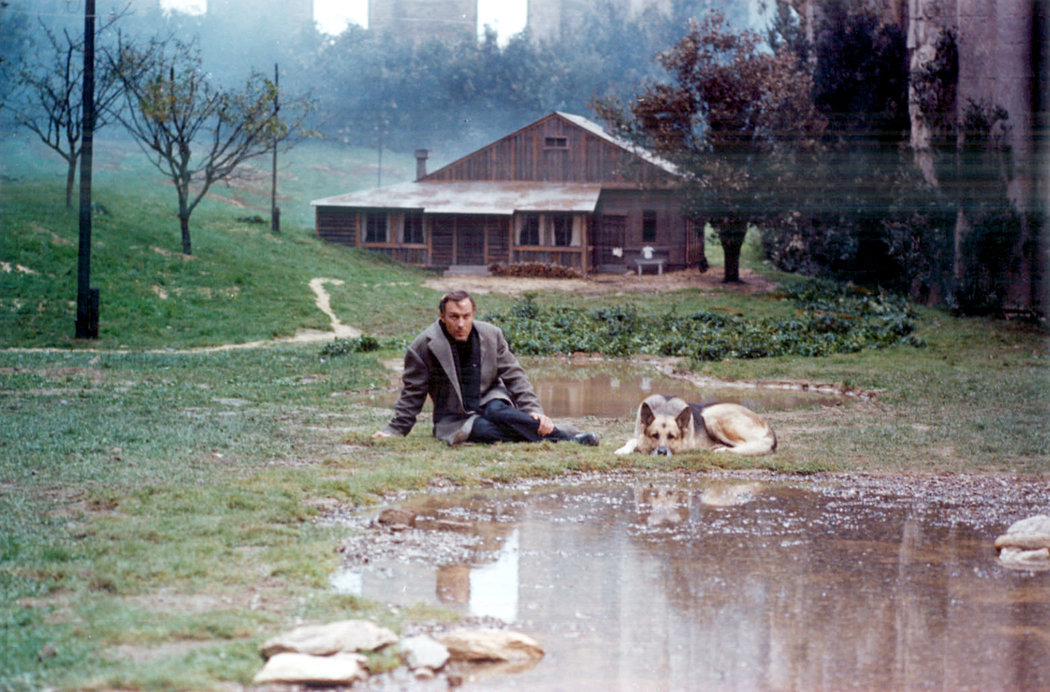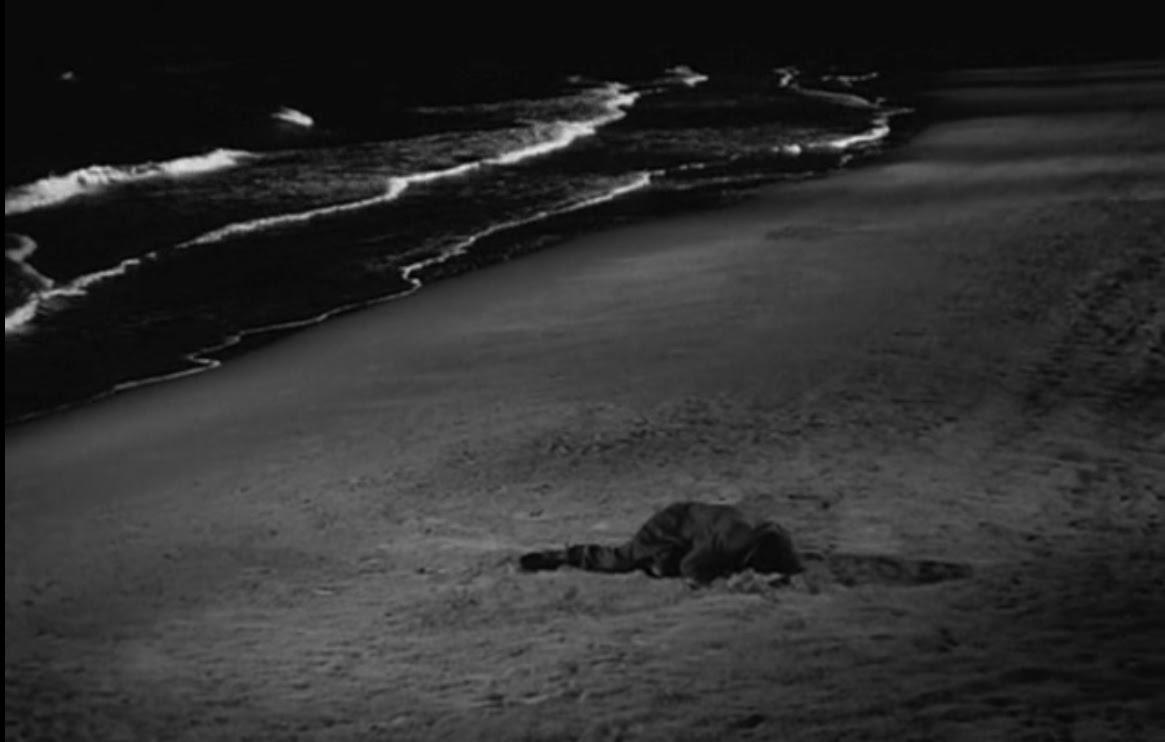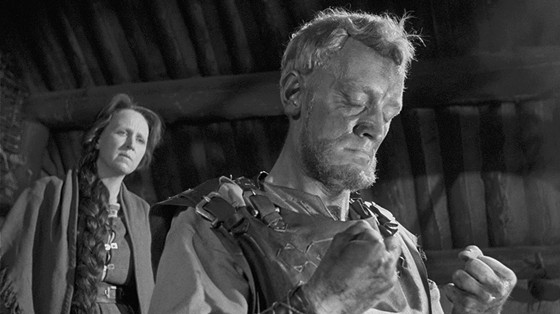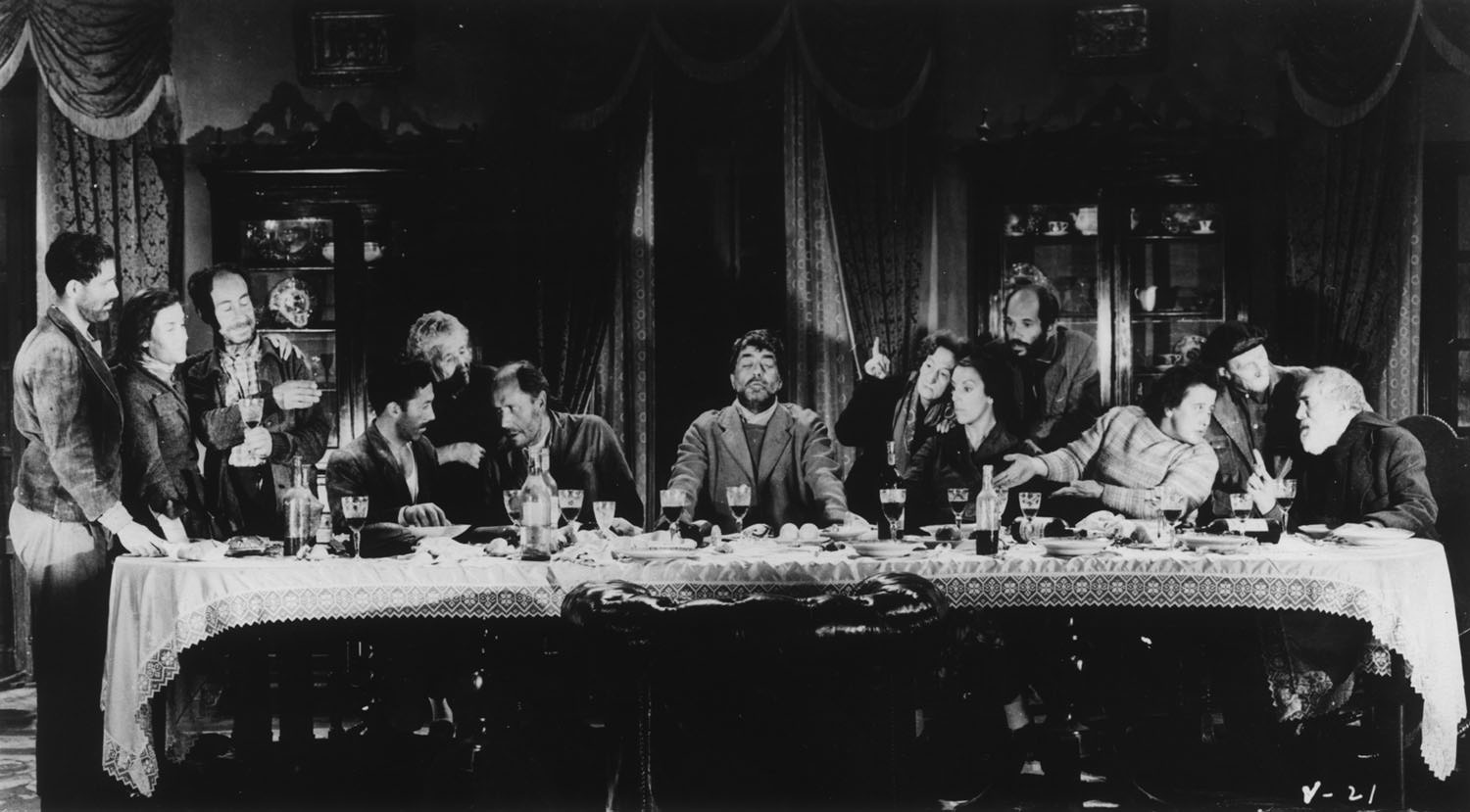6. The Convoluted Ascent to Hulot’s Apartment in Jacques Tati’s “Mon Oncle”

There are few films as charming as this entry in Tati’s series of Monsieur Hulot movies. In it, the awkward and carefree character shares a series of lovely vignettes in a small French village with his nephew, whose well-meaning parents are hopelessly seduced by the wiles of an ever-more modern world and its absurdities: cold angular architecture, ludicrously manicured yards, useless and confounding kitchen gadgets and an ostentatious fountain suggestive of a phallus which is only turned on when guests arrive to the house.
Of course, the boy is happier playing in the dirt with his school friends who pull harmless pranks on a series of hapless victims. And his uncle, played by Tati, loves that world too. The simpler, more organic backdrop of ancient winding streets, booze-filled café conversation and small-town aesthetics represents a warmer way of life being encroached by the more sterile and inhuman world we are always building ourselves into.
There are so many hilarious scenes with impeccable comedic timing throughout the film, it’s hard to choose one that stands out. But near the start of the film, we watch the simple act of Hulot entering the squat apartment building he lives in. The camera is static as we see him enter the front door and ascend to his room on the third floor.
We catch glimpses of him through windows and gaps as he moves from one side of the building to the other, side to side, up and down, in a maze-like procession through a home designed without practicality in mind. Hulot’s figure seems like a funhouse character popping up in different places on an uneven path which rejects a linear trajectory – much like the film refuses to adhere too closely to a linear narrative.
This is the scene that truly shows how this charming character lives his life and when later in the film he’s forced to become more “grown-up,” we can see what the loss of a meandering attitude to life can be like.
The sequence sends the tone and the message: in our hurry to mature as individuals and a species, we’re not taking the time to feel the full joy of being alive. It’s the profundity of the unadulterated child and few scenes in cinema can hope to capture this as beautifully.
7. Freezing to Death Lost in the Past in Andrey Tarkovsky’s “Nostalghia”

Watch a man tread through the obscured ruins of memory. Trakovsky’s exacting, slow journey pits a poet at a loss against his search for meaning, reaching for the fantastic in a world he has made too mundane for himself. The narrative is simple: The Russian protagonist travels to Italy for research with a woman who wants to be his lover. But we soon find that these pursuits are just smokescreens for his longing to fill an inexorable emptiness in his own soul.
The backdrop is an ancient Italian town which serves as a backdrop to his meandering in a time earlier than his own present state. Scenes interweave the past with the present as the poet wades in snapshots of his life as a child, often meshing with scenes in the present.
Those moments look idyllic, the epitome of looking back through rose-colored glasses, just at the antiquated setting harkens to a simpler way of life for humanity. And yet the film is heavily laden with fog and rain in a sign that these idealistic remembrances are just so many smoke and mirrors.
When he encounters another artist – and a mad one to boot – on a similar quest, he tries to attach himself to his path. But in reality, everyone involved is really just avoiding their own respective lives of dissatisfaction. Unrequited love, disillusion in life and disgust with the political state of things are these people’s real problems. But all of them, in their own way, are merely eluding the same thing: they’re not dealing with themselves.
Instead, they seek an artificial “perfect answer” which seems just out of reach in yesteryear, be it in their personal lives or in some bygone era. Events come to a boil all around by the end, symbolized by everything from a drained mineral bath full of garbage to a pointless act of self-immolation.
In the final sequence, our poet is wandering aimlessly through the ruins of a church, which are really the fragments of his own atrophied psyche. Surrounded by a roofless structure, it begins to snow and the camera slowly pulls back as he himself finally becomes obscured even to the idea of who he thinks he wants to be.
It’s a heavy moment, like looking into a snow globe that will never quite let you see the little Christmas scene inside. Finding richer symbolism in cinema which is also so ironically clear is a very hard task indeed.
8. The Strong Man Finally Breaks Down in Federico Fellini’s “La Strada”

Depictions of cruelty in film are often clumsy and brutish and unsubtle. In this film, that process takes an opposite approach, leaving the brutishness to the one character committing the acts. Fellini weaves us a tale of a traveling strongman – played by the imposing Anthony Quinn – who takes a meek woman into his servitude.
The lady in question is nothing short of graceful, working tirelessly to take care of her employer, going to great lengths to empathize with him even when he’s constantly abusive to her. The thing about the strongman is that inside, he’s really very weak. He can’t believe that anyone he doesn’t bully will stick around with him. And so, we are exposed to scene after scene where he treats this poor woman like dirt.
At one point, they meet a circus jester who becomes something of a rival for the woman’s affections (albeit in an implied way), a gentle man who shows the possibilities of kindness and laughter to both of the starving souls. This imbibes our heroine with a little more hope than she had been recently dared to harbor, and a smile returns to her face.
Of course, this all intimidates the strong man, and after a series of encounters, he breaks the fool’s soft skull as easily as he breaks iron chains across his chest for his act. The final deadly act breaks his wife down into madness, and he callously abandons her.
It’s really a miserable tale with no redemption for anyone. Except the reality is that no matter how hard we are, the truth of our trespasses will always wear down our defenses and reach our souls. At the end of the film, this is exactly what occurs. By happenstance, years after the murder and abandonment, the strong man overhears his former woman’s final fate: in despair, she wasted herself away to death.
This information finally breaks the strongman himself. The sequence is the film’s coda, and Quinn’s performance of a man utterly destroyed by his own cruelty catching up with him is nothing short of devastating. It is, perhaps, the only truly strong moment in this weak man’s life, when he finally faces his own darkness, and it’s unforgettable.
9. The True Taste of Death in Ingmar Bergman’s “The Virgin Spring”

One of the most trite and exploited devices in cinema is the revenge killing. You see it in virtually every action movie, crime movie, and many horror movies. The blameless heroes smite the bad guys as music rises and the audience screams “YEAH!” with an exhalation of catharsis. Justice has been served, the righteous have won and the villains have rightly paid the price for their unconscionable offenses. The epidemic of such juvenile escapist sequences could not be more phony.
In reality, murder is an ugly thing, a difficult thing, a dehumanizing thing, no matter what the reason. We are fortunate, then, that in this film at least, the great Ingmar Bergman gives us a real taste of what it means to take a human life. Are you ready to face this?
The story is simple enough: in a medieval Scandinavian homestead, the favored daughter of the manor’s deeply religious Lord journeys through the woods travelling to a church. On the way, she is beset by three wild and homeless young men who rape her and kill her. Later that night, those same three men arrive at the manor seeking shelter, not knowing that it is their victims’ settlement. The father grants them a night’s stay and orders his servants to set a place for them.
Already worried by their daughter’s tardiness, the family begins to put clues together which reveal her fate and the fact that they are lodging her murderers. The perpetrators have no idea who their benefactors are, nor do they know they have been found out. So they set for a night’s rest with bellies full of their hosts’ good tidings. The father waits for them to fall asleep, arms himself and enters the room, ordering his vassals to lock him in.
What follows is perhaps the only moment in film where murder feels really real. The men awaken and realize they are in mortal danger. There’s no music. There’s not even screams or quips or exclamations of “You killed my daughter!” Instead, there is the subdued rumbling of struggle, hurried gasps of desperation and a stillness that pierces the soul. One by one, the father kills the men with a knife. It’s all very up close and personal.
There is no glory here, no redemption. The man’s face is stoic as he takes life, but slowly becomes more demonic. As the sequence progresses, the second rapist tumbles through a fire as he wrestles with the patriarch of the house. One frame captures the father’s face through the flames and in that moment, he is as much a demon as the criminals he revenges himself upon.
As soon as the deed is done, the despondent man looks at his handiwork and he realizes what he’s done: he’s become just as bad as these doomed souls he’s killed. Instinctively, he understands at once, he has committed as much a sin before god as the men who took his daughter from him.
It’s such a profoundly powerful scene, the viewer can’t help but walk away second-guessing so many of those sensationalized moments in everything from Dirty Harry to Die Hard and Last House on the Left – and that, in the end, is the greatest gift the film imparts to the viewer.
10. The Last Supper Photograph from Luis Buñuel’s “Viridiana”

When are the holy actually profane and when are the profane actually holy? For Buñuel, the answer is all of us are both. And boy, does he drive it in. The story of Viridiana starts off innocently enough. A nun about to take her vows is summoned by her rich uncle who wants to see her urgently before she completes her novitiate. Reluctant at first, she feels beholden to him as he has supported her after her parents’ passing.
The trouble begins when the uncle throws himself at her, compelled by her resemblance to his lost wife (Viridiana’s blood aunt). His plan: to make her his wife. She firmly rejects him and runs away into the night, determined to return to the abbey. At the bus station, she is stopped by the police and returned to the estate to find her uncle hanging from a tree.
Consumed by the guilt of his suicide – which she feels responsible for – she decides to forgo her vows and stay on the grounds in an act of contrition. She gathers a bunch of beggars from the nearby town, offering them room, board and purpose. The motley crew has better and worse souls in it, but at every turn, Viridiana is determined to bring the best out of them.
At the same time, her uncle’s son has come to claim half of the inheritance. He is narcissistic, lecherous and selfish – the polar opposite of the humble would-be nun. Contrary to her mission, her cousin starts trying to seduce the hapless heroine. As the story progresses, we find that each of the beggars are starting to show their weaknesses, expressed almost to a tee in the seven deadly sins.
The game-changing scene comes near the end when the vagabonds find they have the home to themselves for an evening. They break into the main house and indulge in the best food and wine, wanton destruction, debauchery and violence. But they’re all loving it. It’s a party of Bacchanal stature, a full abandon the poor can only dream of, and they delve into it unabashedly.
At one moment, before the whole thing disintegrates into theft, rape and murder, the jolly miscreants take a group photo around the long dining room table. In a quick series of still shots, we see what Buñuel was after all along: an updated depiction of the Last Supper, Jesus and the Apostles seamlessly replaced with a bunch of dirty, perverted bums.
It’s a brilliant moment, one almost the entire film leads to, and flips the whole notion of sacred and profane right on its head. None of us are perfect, none of us are irreparable, and all of us, eventually, fall into some state of degradation. Believing otherwise, the sequence and the whole work finally imply, is perhaps the worst sin of all.
Author Bio: Argentinean-born New Yorker Miguel Cima is an NYU Film School alumni and a veteran of the entertainment biz (Warner Bros, Dreamworks, MTV, etc.). An accomplished writer, filmmaker, and comic book creator, Miguel’s movie, Dig Comics, won Best Documentary at the San Diego Comic Con. A culture junkie, foodie and world traveler, he is happily unmarried to a rockin’ heavy metal vocalist gal and slavishly serves his true masters – two dogs and a cat.